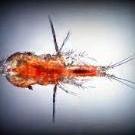-
Topics
-
Latest Update
-
-
241
WTS live rotifers, tigger pods, phyto
ups. all avail tele me at littlefishaqua serious enquiry only pls dont hi me, and disappeared for hours and days. dont waste time loc, tamp/hougang $50 worth of purchase foc delivery -
1
-
1
WTS: JECOD DMP-40M Wavemaker x 2
tested in water. its blowing my sand around. video shows it dry testing. UK plug btw. WhatsApp Video 2025-02-19 at 18.02.52.mp4 -
1
WTS: JECOD DMP-40M Wavemaker x 2
selling 2 x DMP40M(wireless version) $150 each. Just got it yesterday (19/02/2025). RFS: too strong for my tank. This is the Bluetooth + Wireless version. Contact me at 8282nine941 Collection at Khatib. Still comes with box.
-






Recommended Posts
Join the conversation
You can post now and register later. If you have an account, sign in now to post with your account.